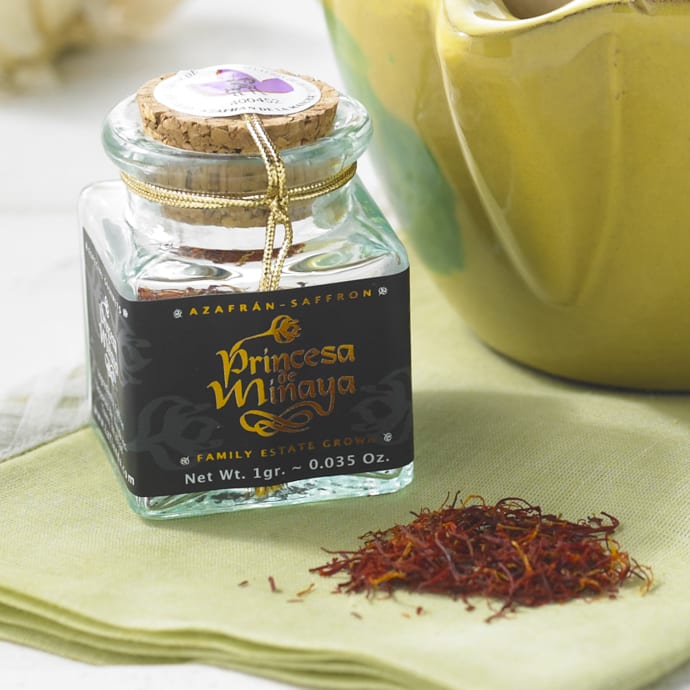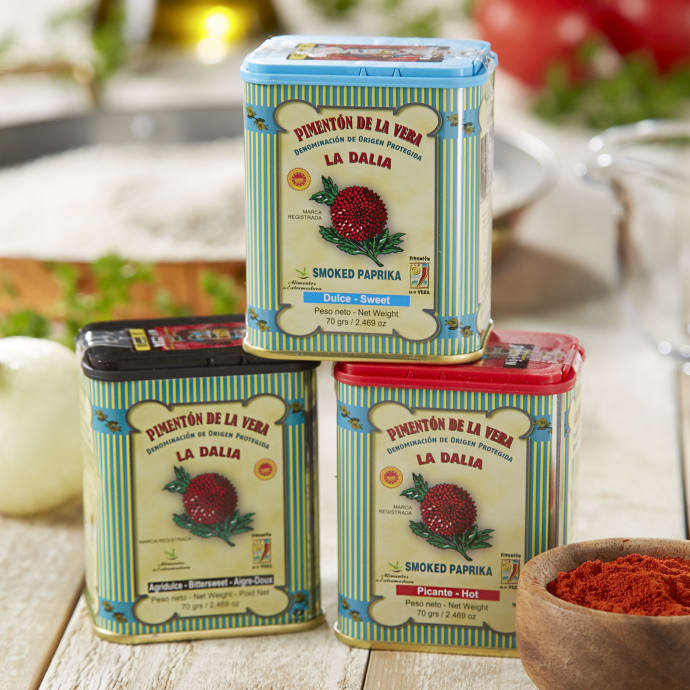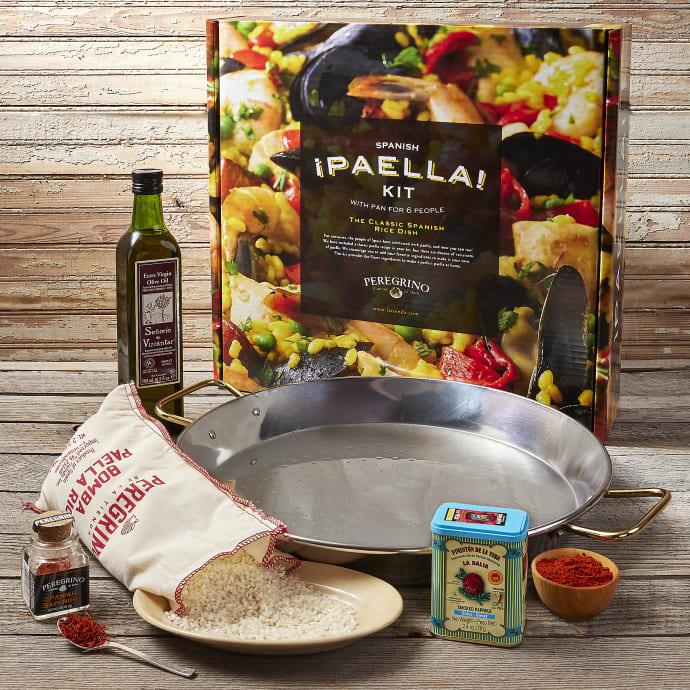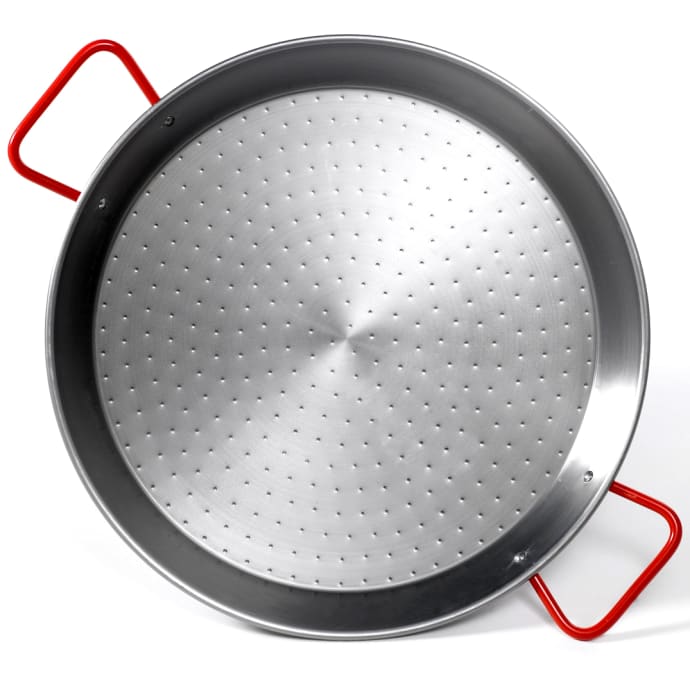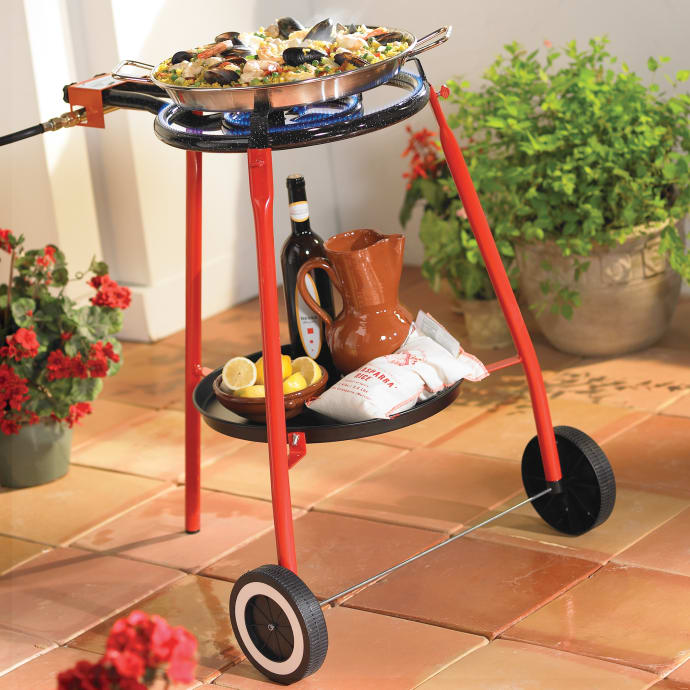
Secrets of Paella
Wine Spectator
-
August 20, 2007
American's favorite Spanish dish comes in endless variations
Sam Gugino
Whether it is barbecue in Memphis or bouillabaisse in Marseilles, certain dishes spark debate about which version is the genuine one. Add the Spanish dish paella to the list. While Americans have more or less a common notion of what should be in paella, one Spaniard might tell you it has to have rabbit, another that it must contain lima beans, another snails, and on and on. But all agree that almost any way you cook it, paella is a one-pan wonder that makes great dinner party fare. It’s a versatile meal for wine pairing, too.
“Paella,” writes Penelope Casas in her book Paella! Spectacular Rice Dishes From Spain (Henry Holt), “is among the best known and most beloved dishes in the world.” And yet, Casas notes, it is also one of the most misunderstood and thus most abused dishes in the world. The reason, Casas says, is that “Spaniards who came to the United States in the 1930s and 1940s mostly came from northern Spain where there is little paella. They used cheap ingredients, including converted rice, but found a formula that was appealing to many Americans.” This is much the same way spaghetti and meatballs found a home here as “typical” Italian fare.
But paella has become much more authentic in America in recent years. At Taberna del Alabardero in Washington, D.C., chef Santi Zabaleta once made 10 different paellas for a paella festival, from the classic Valenciana (with duck, rabbit and chicken) to Arroz Negro, paella with squid ink. “I think paella has been a bit exploited, like tapas,” Zabaleta says. “There are no rules. People invent.”
Paella was born in the rice fields of Valencia, on Spain’s eastern coast. It was created as a lunch dish by rice-field workers, who cooked it outdoors over an open fire using whatever local ingredients were available. While it eventually migrated to restaurants, paella is still often cooked outdoors at home, usually by men, for Sunday afternoon dinner.
The heart and soul of paella is the rice. Preparing paella without good rice is like making risotto from Uncle Ben’s. As with risotto, the rices used for paella, such as bomba, are short grain. Bomba is a low-starch rice, but the higher-starch arborio rice used for risotto can be successfully substituted because paella is not stirred constantly as is risotto. So the grains of rice will be drier and separate, not creamy as in risotto.
From an authenticity standpoint, anything that goes into the rice for paella can be considered a condiment. And such condiments can include just about anything from squid ink to lentils. However, Daniel Olivella, who has several paellas on his menu at B44 restaurant in San Francisco, says non-Spaniards “think paella has to have a lot of tropezones, meaning things that stumble in your mouth”—a reference to a kitchen-sink list of seafood, sausage and poultry that can appear all together in some versions. But the Spanish, and particularly the Valencians, prefer to highlight more focused ingredients by having separate paellas for each of meat, seafood or vegetables. That said, I happen to like the way some Spanish dishes mingle seafood and pork, whether serrano ham or chorizo.
While saffron (always in thread form, not powder) is the spice most associated with paella, Casas believes smoked paprika is just as important. “It makes a huge difference,” she says. Spanish chorizos also contain quite a bit of smoked paprika.
Though making paella may seem daunting to some home cooks, it’s really not that difficult. The keys, Zabaleta says, are to have everything at the ready and to use good ingredients. “You can make a good paella with just clams if the clams and the stock are good,” he says.
Paella is traditionally made in a wide (17 inches is the best width) and shallow paella pan; the Spanish prefer pans made of rather cheap, rolled or carbon steel over more expensive stainless steel versions because the former darken to a rustic hue. The shape allows the rice to cook completely without becoming creamy or soupy. One of the highlights of true Valencian paella is the socarat, a thin layer of rice at the bottom of the pan that becomes brown and crusty. Failing an authentic paella pan, use a roasting pan or large sauté pan.
Regardless of the pan, start your paella on top of the stove, where it will have to straddle two burners. Keep moving the pan around to cook evenly until it goes into the oven to finish. You can also finish your paella on top of the stove covered with foil, as I had to do when I found out at the last minute that my oven was too small. If you are feeling adventurous, do your paella over a charcoal fire, which will give it a smokier flavor. Companies such as La Tienda in Virginia also sell tripod and propane burner setups for outdoor paella cooking.
The Spanish typically eat paella communally, helping themselves to the pan set in the middle of the table.
While paellas with meat could stand up to a red wine, such as a young and fruity crianza from Rioja, for most paellas I think white wines are more appropriate. I particularly liked an Albariño and a Verdejo. Also good choices are the many fine rosés from Spain, especially from Navarra or Rueda.
The following recipe is an adaptation of Casas’ traditional paella from Valencia. Feel free to modify it with seafood or sausage. Just don’t tell your Spanish friends it’s authentic.
Paella Valenciana
• 6 cups chicken broth
• 1/2 teaspoon saffron threads
• 6 sprigs fresh rosemary
• Salt
• 1 Cornish hen or half of a 2-1/2- to 3-pound chicken
• 1 small rabbit
• 8 tablespoons olive oil
• 1 green bell pepper, finely chopped
• 1 medium onion, finely chopped
• 8 garlic cloves, minced
• 2 medium tomatoes, finely chopped, or a 14-ounce can
• diced tomatoes
• 1/2-pound green beans (preferably broad, flat beans), trimmed and halved, crosswise
• 1/2-pound snap or snow peas, strings removed
• One 14-ounce can artichoke hearts in water, drained and quartered
• 2 tablespoons minced parsley
• 1 teaspoon paprika, preferably smoked
• 3 cups short-grain rice, such as bomba or Italian arborio rice
1. Put the broth in a large saucepan over medium heat. Crush the saffron between your fingers into the broth. Add the rosemary and salt to taste. Gently simmer 20 minutes. Remove, discard rosemary and keep the broth over very low heat.
2. Meanwhile, remove the Cornish hen wing tips and the wings, discarding the tips. Separate the thigh from the drumstick. Halve the breast lengthwise and cut the back into 2 pieces. If using chicken, cut into similar size pieces, 2 to 3 inches long. Do the same to the rabbit. Sprinkle all the meat with salt.
3. Heat the oven to 400° F. Put the oil in a 17-inch-wide paella pan over two burners on high heat. Brown the chicken quickly without cooking it all the way through. Remove to a platter. Do the same with the rabbit. Add the pepper, onion and garlic to the pan. Lower the heat to medium and cook until softened. Add the tomatoes, beans, peas and artichoke hearts. Return the heat to high and cook for 3 minutes.
4. Add the parsley, paprika and rice and stir well. Pour in the hot broth and bring to a boil. Return the chicken and rabbit to the pan and taste for salt. Boil for 5 minutes or until the rice is no longer soupy but enough liquid remains to continue cooking the rice. Stir periodically to cook evenly.
5. Transfer the pan to the oven. Cook, uncovered, until the rice is almost completely cooked but still quite firm, about 10 to 12 minutes in a gas oven, 15 to 20 minutes in an electric oven.
6. Remove the pan to a warm spot (such as on top of the stove with the burners off) and cover with foil. Let sit 5 to 10 minutes. For the socarat, put the pan over high heat for a few minutes or until a nice crust forms on the bottom of the pan without burning.
Serves 6.
HOW TO GET IT
For authentic Spanish ingredients try these mail-order companies:
Las Española Meats Inc., Harbor City, CA, (310) 539-0455, www.laespanolameats.com
Olé Olé Foods, Belleville, NJ, (201) OLE-8270, www.oleolefoods.com
La Tienda, Williamsburg, VA, (888) 472-1022, www.tienda.com
Sam Gugino
Whether it is barbecue in Memphis or bouillabaisse in Marseilles, certain dishes spark debate about which version is the genuine one. Add the Spanish dish paella to the list. While Americans have more or less a common notion of what should be in paella, one Spaniard might tell you it has to have rabbit, another that it must contain lima beans, another snails, and on and on. But all agree that almost any way you cook it, paella is a one-pan wonder that makes great dinner party fare. It’s a versatile meal for wine pairing, too.
“Paella,” writes Penelope Casas in her book Paella! Spectacular Rice Dishes From Spain (Henry Holt), “is among the best known and most beloved dishes in the world.” And yet, Casas notes, it is also one of the most misunderstood and thus most abused dishes in the world. The reason, Casas says, is that “Spaniards who came to the United States in the 1930s and 1940s mostly came from northern Spain where there is little paella. They used cheap ingredients, including converted rice, but found a formula that was appealing to many Americans.” This is much the same way spaghetti and meatballs found a home here as “typical” Italian fare.
But paella has become much more authentic in America in recent years. At Taberna del Alabardero in Washington, D.C., chef Santi Zabaleta once made 10 different paellas for a paella festival, from the classic Valenciana (with duck, rabbit and chicken) to Arroz Negro, paella with squid ink. “I think paella has been a bit exploited, like tapas,” Zabaleta says. “There are no rules. People invent.”
Paella was born in the rice fields of Valencia, on Spain’s eastern coast. It was created as a lunch dish by rice-field workers, who cooked it outdoors over an open fire using whatever local ingredients were available. While it eventually migrated to restaurants, paella is still often cooked outdoors at home, usually by men, for Sunday afternoon dinner.
The heart and soul of paella is the rice. Preparing paella without good rice is like making risotto from Uncle Ben’s. As with risotto, the rices used for paella, such as bomba, are short grain. Bomba is a low-starch rice, but the higher-starch arborio rice used for risotto can be successfully substituted because paella is not stirred constantly as is risotto. So the grains of rice will be drier and separate, not creamy as in risotto.
From an authenticity standpoint, anything that goes into the rice for paella can be considered a condiment. And such condiments can include just about anything from squid ink to lentils. However, Daniel Olivella, who has several paellas on his menu at B44 restaurant in San Francisco, says non-Spaniards “think paella has to have a lot of tropezones, meaning things that stumble in your mouth”—a reference to a kitchen-sink list of seafood, sausage and poultry that can appear all together in some versions. But the Spanish, and particularly the Valencians, prefer to highlight more focused ingredients by having separate paellas for each of meat, seafood or vegetables. That said, I happen to like the way some Spanish dishes mingle seafood and pork, whether serrano ham or chorizo.
While saffron (always in thread form, not powder) is the spice most associated with paella, Casas believes smoked paprika is just as important. “It makes a huge difference,” she says. Spanish chorizos also contain quite a bit of smoked paprika.
Though making paella may seem daunting to some home cooks, it’s really not that difficult. The keys, Zabaleta says, are to have everything at the ready and to use good ingredients. “You can make a good paella with just clams if the clams and the stock are good,” he says.
Paella is traditionally made in a wide (17 inches is the best width) and shallow paella pan; the Spanish prefer pans made of rather cheap, rolled or carbon steel over more expensive stainless steel versions because the former darken to a rustic hue. The shape allows the rice to cook completely without becoming creamy or soupy. One of the highlights of true Valencian paella is the socarat, a thin layer of rice at the bottom of the pan that becomes brown and crusty. Failing an authentic paella pan, use a roasting pan or large sauté pan.
Regardless of the pan, start your paella on top of the stove, where it will have to straddle two burners. Keep moving the pan around to cook evenly until it goes into the oven to finish. You can also finish your paella on top of the stove covered with foil, as I had to do when I found out at the last minute that my oven was too small. If you are feeling adventurous, do your paella over a charcoal fire, which will give it a smokier flavor. Companies such as La Tienda in Virginia also sell tripod and propane burner setups for outdoor paella cooking.
The Spanish typically eat paella communally, helping themselves to the pan set in the middle of the table.
While paellas with meat could stand up to a red wine, such as a young and fruity crianza from Rioja, for most paellas I think white wines are more appropriate. I particularly liked an Albariño and a Verdejo. Also good choices are the many fine rosés from Spain, especially from Navarra or Rueda.
The following recipe is an adaptation of Casas’ traditional paella from Valencia. Feel free to modify it with seafood or sausage. Just don’t tell your Spanish friends it’s authentic.
Paella Valenciana
• 6 cups chicken broth
• 1/2 teaspoon saffron threads
• 6 sprigs fresh rosemary
• Salt
• 1 Cornish hen or half of a 2-1/2- to 3-pound chicken
• 1 small rabbit
• 8 tablespoons olive oil
• 1 green bell pepper, finely chopped
• 1 medium onion, finely chopped
• 8 garlic cloves, minced
• 2 medium tomatoes, finely chopped, or a 14-ounce can
• diced tomatoes
• 1/2-pound green beans (preferably broad, flat beans), trimmed and halved, crosswise
• 1/2-pound snap or snow peas, strings removed
• One 14-ounce can artichoke hearts in water, drained and quartered
• 2 tablespoons minced parsley
• 1 teaspoon paprika, preferably smoked
• 3 cups short-grain rice, such as bomba or Italian arborio rice
1. Put the broth in a large saucepan over medium heat. Crush the saffron between your fingers into the broth. Add the rosemary and salt to taste. Gently simmer 20 minutes. Remove, discard rosemary and keep the broth over very low heat.
2. Meanwhile, remove the Cornish hen wing tips and the wings, discarding the tips. Separate the thigh from the drumstick. Halve the breast lengthwise and cut the back into 2 pieces. If using chicken, cut into similar size pieces, 2 to 3 inches long. Do the same to the rabbit. Sprinkle all the meat with salt.
3. Heat the oven to 400° F. Put the oil in a 17-inch-wide paella pan over two burners on high heat. Brown the chicken quickly without cooking it all the way through. Remove to a platter. Do the same with the rabbit. Add the pepper, onion and garlic to the pan. Lower the heat to medium and cook until softened. Add the tomatoes, beans, peas and artichoke hearts. Return the heat to high and cook for 3 minutes.
4. Add the parsley, paprika and rice and stir well. Pour in the hot broth and bring to a boil. Return the chicken and rabbit to the pan and taste for salt. Boil for 5 minutes or until the rice is no longer soupy but enough liquid remains to continue cooking the rice. Stir periodically to cook evenly.
5. Transfer the pan to the oven. Cook, uncovered, until the rice is almost completely cooked but still quite firm, about 10 to 12 minutes in a gas oven, 15 to 20 minutes in an electric oven.
6. Remove the pan to a warm spot (such as on top of the stove with the burners off) and cover with foil. Let sit 5 to 10 minutes. For the socarat, put the pan over high heat for a few minutes or until a nice crust forms on the bottom of the pan without burning.
Serves 6.
HOW TO GET IT
For authentic Spanish ingredients try these mail-order companies:
Las Española Meats Inc., Harbor City, CA, (310) 539-0455, www.laespanolameats.com
Olé Olé Foods, Belleville, NJ, (201) OLE-8270, www.oleolefoods.com
La Tienda, Williamsburg, VA, (888) 472-1022, www.tienda.com
Other Press
This Classic Garlic Keeper Is the One Thing I Made Sure I Brought Back from Spain
The Kitchn
-
July 10, 2024
That's How the Light Gets In
Defense Visual Information Distribution Service
-
April 20, 2024
See How Jamón Gets Made in the Heartland of Spanish Pork
Washington Post
-
April 16, 2024
No Ortolans Were Hurt During the Making of This Film
New York Times
-
December 12, 2023
Featured Products

Princesa de Minaya Saffron, D.O. La Mancha
SN-09
(53)
$19.00$19.00

Smoked Paprika Trio by La Dalia
PK-12
(52)
$18.00$18.00

Deluxe Paella Kit with Stainless Pan by Peregrino
PA-07
(6)
$199.00$199.00

Bomba Paella Rice by Peregrino
RC-03
(107)
$19.00$19.00

Wood-Fire Roasted Piquillo Peppers from Lodosa
PQ-14
(25)
$15.00$15.00

17 Inch Traditional Steel Paella Pan - Serves 8
PP-02
(17)
$29.00$29.00

Paella Burner with Rolling Stand and FREE 17 inch Pan
PB-06B
(7)
$296.00$296.00
 SALE
SALEMedium Forged Steel Paella Tripod (For 15-18 Inch Paella Pans)
PP-16
$44.00 $39.00

